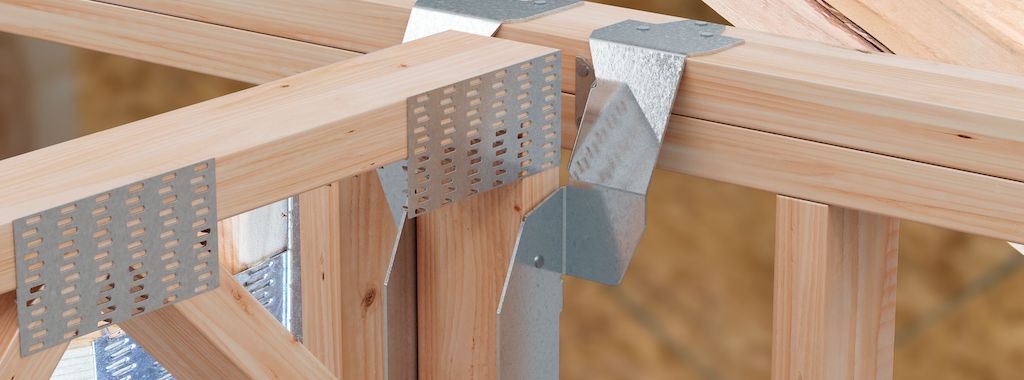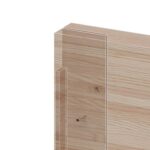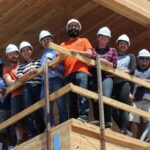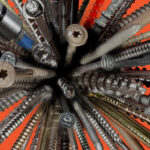One of the first mixed-use designs I worked on as a consulting structural engineer was a four-story wood-frame building over two levels of parking. Designing the main lateral-force-resisting system with plywood shearwalls was a challenge for this project that required new details to meet the high design loads. The high overturning forces were resisted using the Simpson Strong-Tie® Strong-Rod™ anchor tiedown system, which incorporates high-strength rods, bearing plates and shrinkage compensation devices.
At the time, these construction details using Strong-Rod systems and high- load shearwall diaphragms were new, innovative concepts. However, this method of construction rapidly became commonplace as intense demand for housing fueled the trend toward denser, mixed-use developments in downtown areas. I discussed the trend toward taller, denser developments in this post.
A more recent trend in wood-frame construction has been the shift to Type III wood-frame construction, which allows designs up to five stories. To help educate designers on some of the nuances of Type III wood-frame construction and provide guidance on meeting the associated code requirements, we reached out to Bruce Lindsey, the South Atlantic Regional Director for WoodWorks. Bruce wrote a two-part article entitled Fire Protection Considerations with Five-Story Wood-Frame Buildings – Part 1 and Part 2. This post will go into more detail on connecting the floor system to the two-hour fire-rated exterior walls and discuss our new DGT series joist hangers that are specially designed for this application.
As a consulting engineer, I was aware of fire requirements because I needed to account for the weight of fire sprinklers, added layers of gypsum board, fire-proofing on steel, or concrete slab thickness in my design. While the increased loads affect the vertical- and lateral-force-resisting systems, I seldom needed to change the details and connections in my designs.
The exterior walls in Type III wood-frame construction require fire-retardant-treated (FRT) lumber with two layers of gypsum board to provide a two-hour fire rating. There are many established fire-rated floor and wall assemblies available. The challenge, as discussed in Part 2 of Mr. Lindsey’s post, is detailing the intersections between the floor and wall systems. Connecting the floor framing to the exterior walls in Type III construction requires careful detailing to transfer the vertical loads without compromising the two-hour fire rating of the wall assembly.
Below is a summary of some of the possible fire wall connections as discussed in Mr. Lindsey’s previous blog posts.
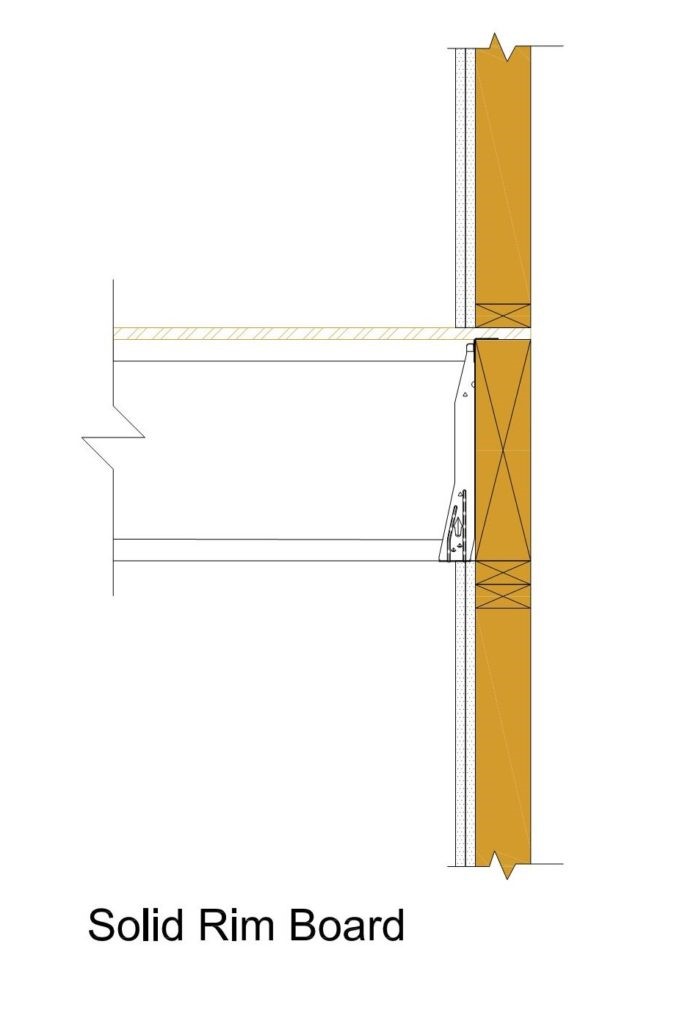
A solid header on top of the wall that has adequate thickness to provide a two-hour rating through its charring capability. The cost and availability of solid rim board material should be considered.
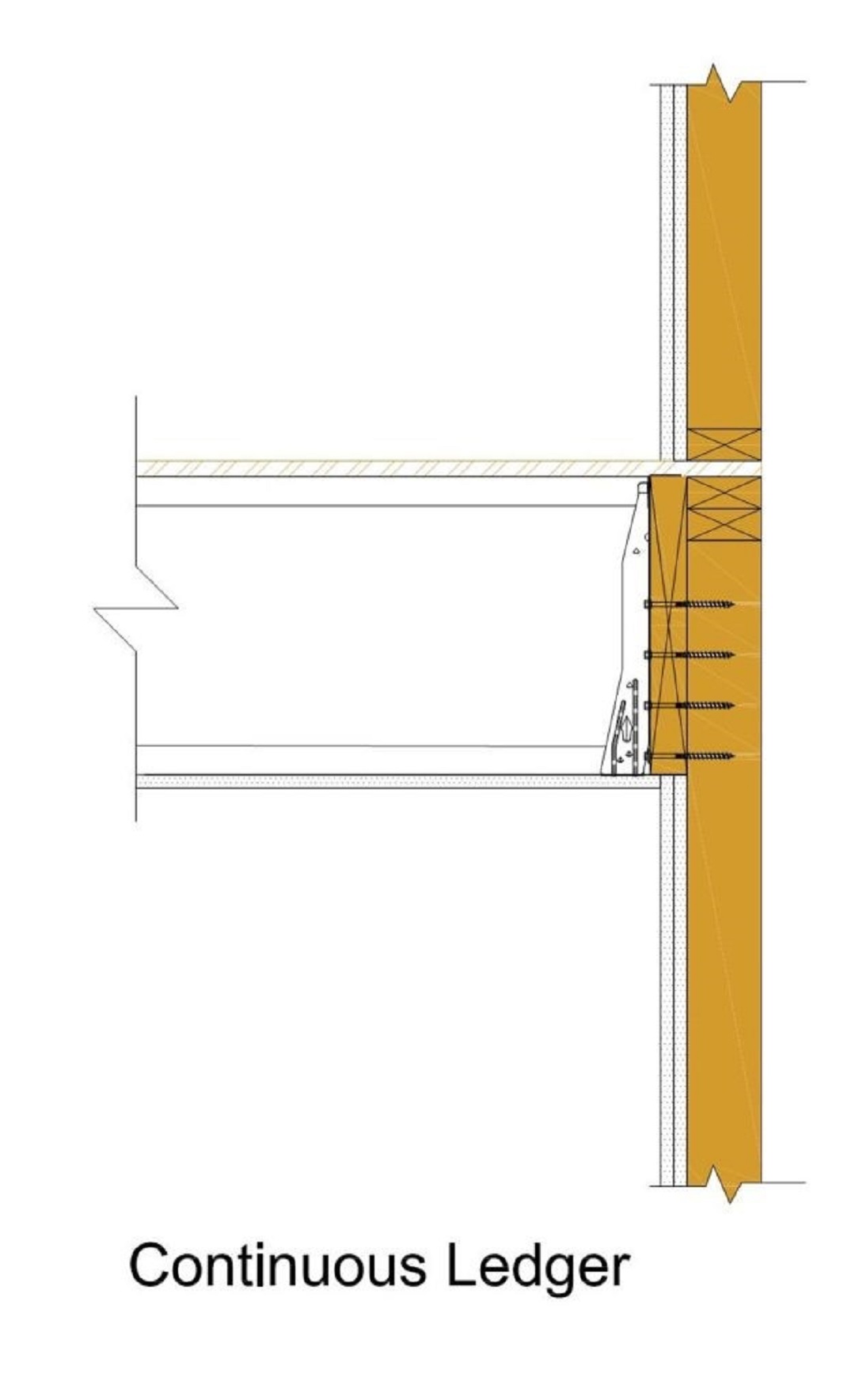
A continuous 2x ledger or blocking to provide one hour of fire resistance. The second hour of resistance is provided by ceiling gypsum board. Some jurisdictions object to this detail over concerns about a fire starting within the floor cavity.
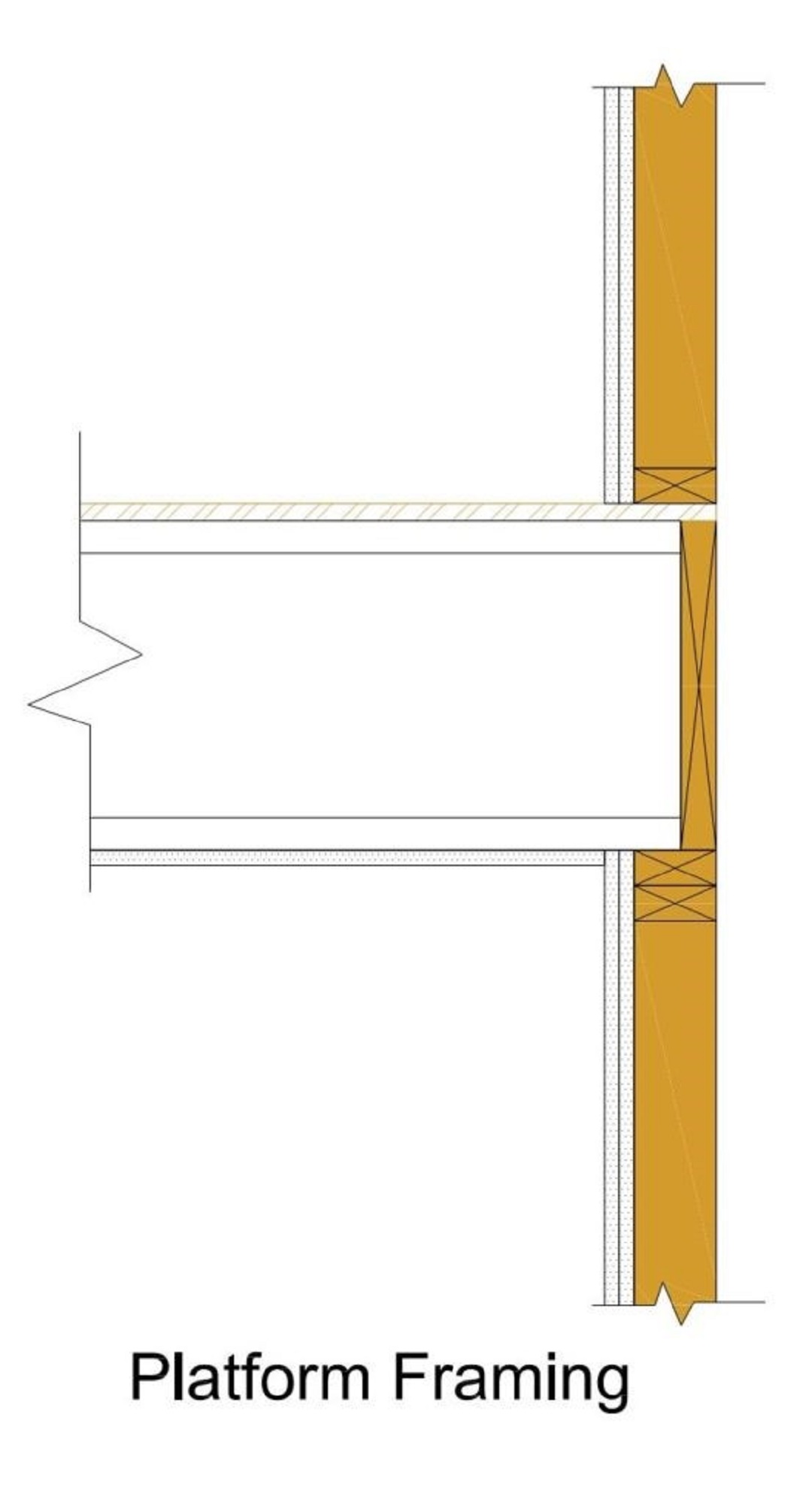
Some jurisdictions interpret the two-hour exterior wall requirement as applying only to the wall and not the floor. In such jurisdictions, designers can sometimes use standard platform framing in Type III construction.
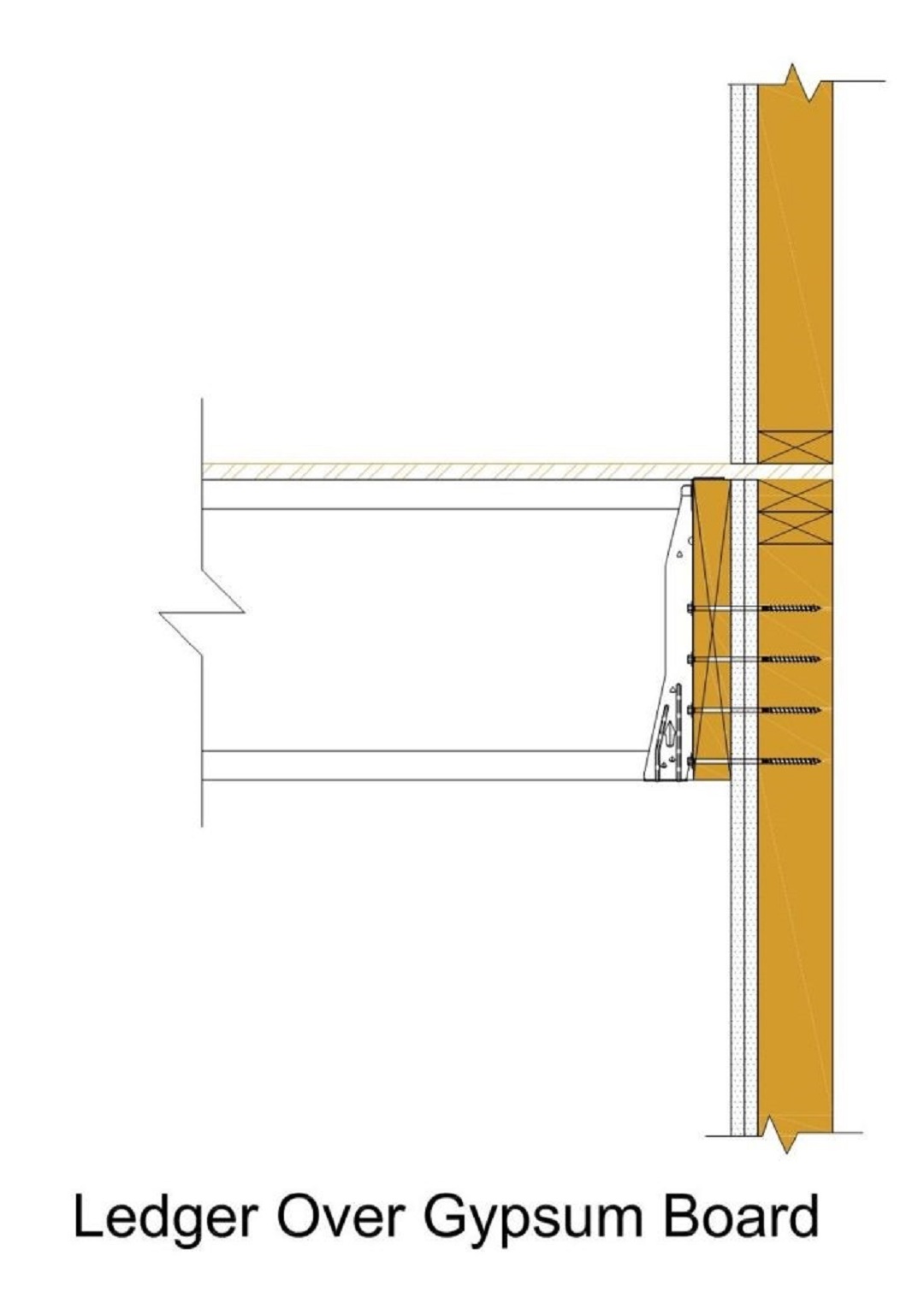
A variation where the ledger can be installed over two layers of gypsum board. Simpson Strong-Tie has tested and published values for ledger connections over gypsum board using our SDWH and SDWC fasteners. The testing of these fasteners was discussed in our Spanning the Gap blog post.
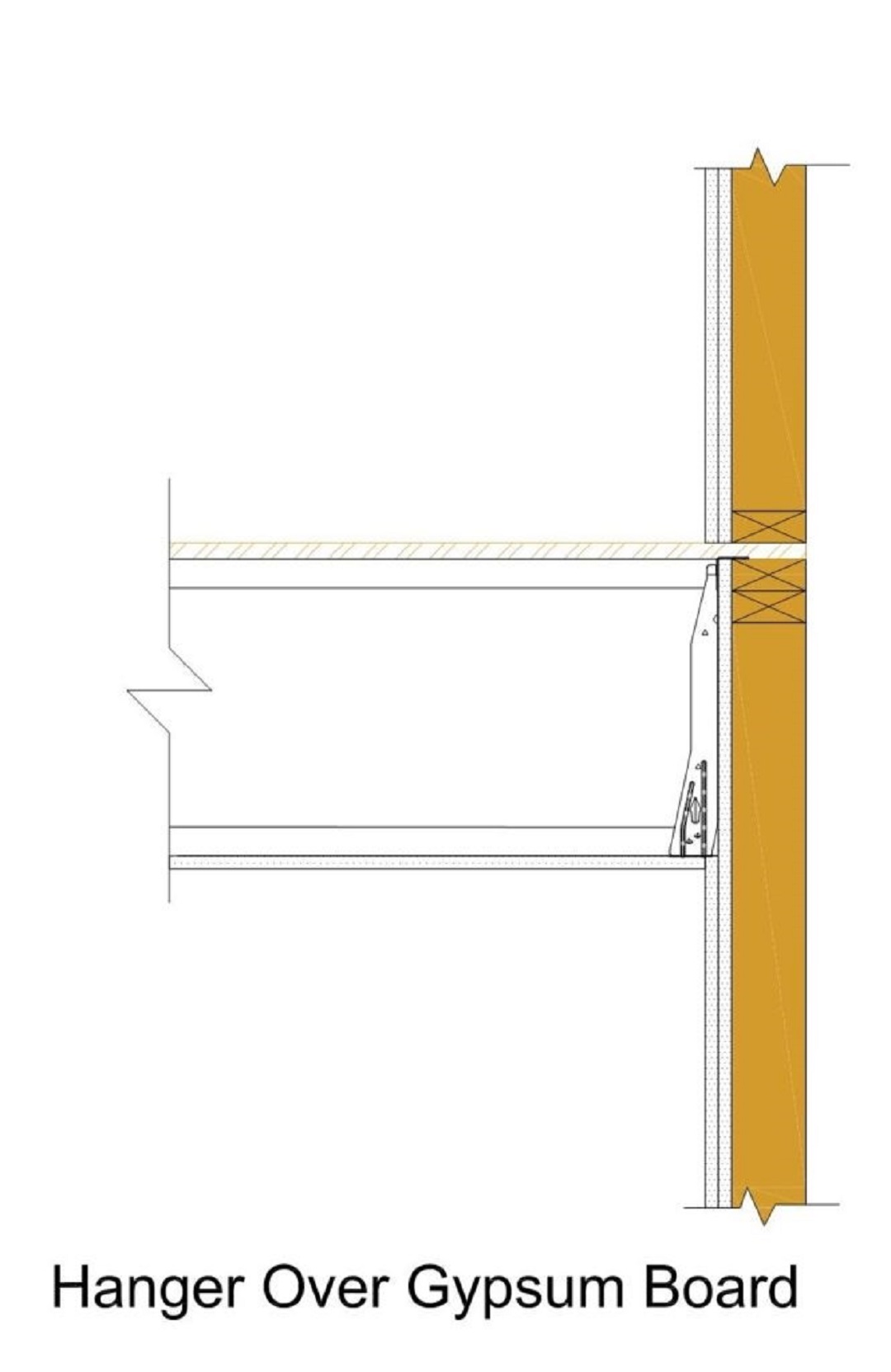
In this detail, one hour of fire resistance is provided by a single layer of gypsum board running the full height of the wall with a hanger installed over the gypsum board. Similar to the continuous ledger detail, the second hour of resistance is provided by the ceiling gypsum board. We publish allowable loads for many popular hangers installed over drywall in our technical bulletin T-C-TFWALL. The advantage of this detail is in the use of standard top-flange hangers, which reduce cost.
A variation of this detail is our DU/DHU series of drywall hangers that are installed over two layers of gypsum board. These were addressed in this post.
Designs using hangers or ledgers installed over gypsum board can create construction sequencing challenges. Since the gypsum board needs to be installed before the framing, the contractor will need to coordinate between the trades.
A solution that eliminates sequencing issues for Type III construction is our DGT series of firewall hangers. DGT hangers are designed to easily install on a two-hour wood stud fire wall. These top-flange hangers feature enough space to allow two layers of 5/8″ gypsum wall board to be slipped into place after the framing is complete.
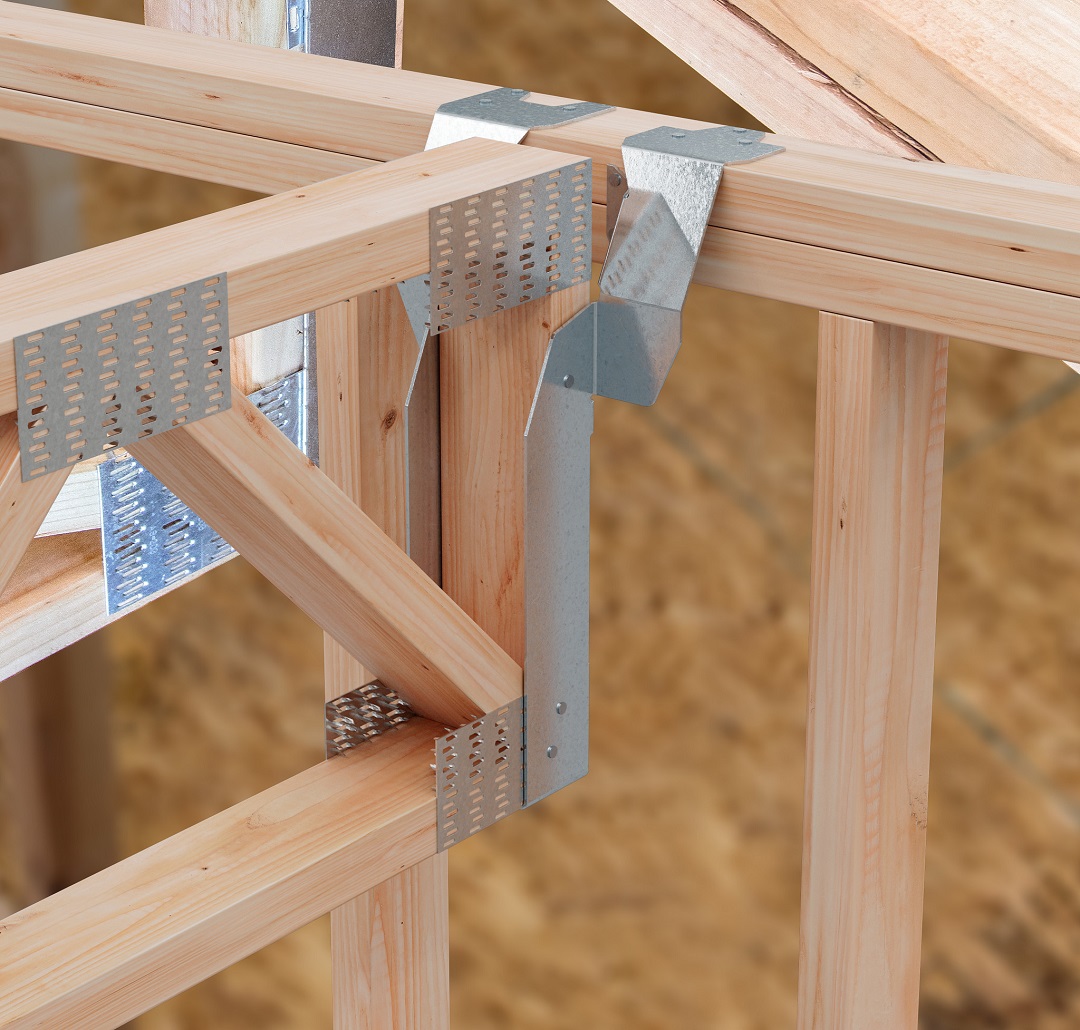
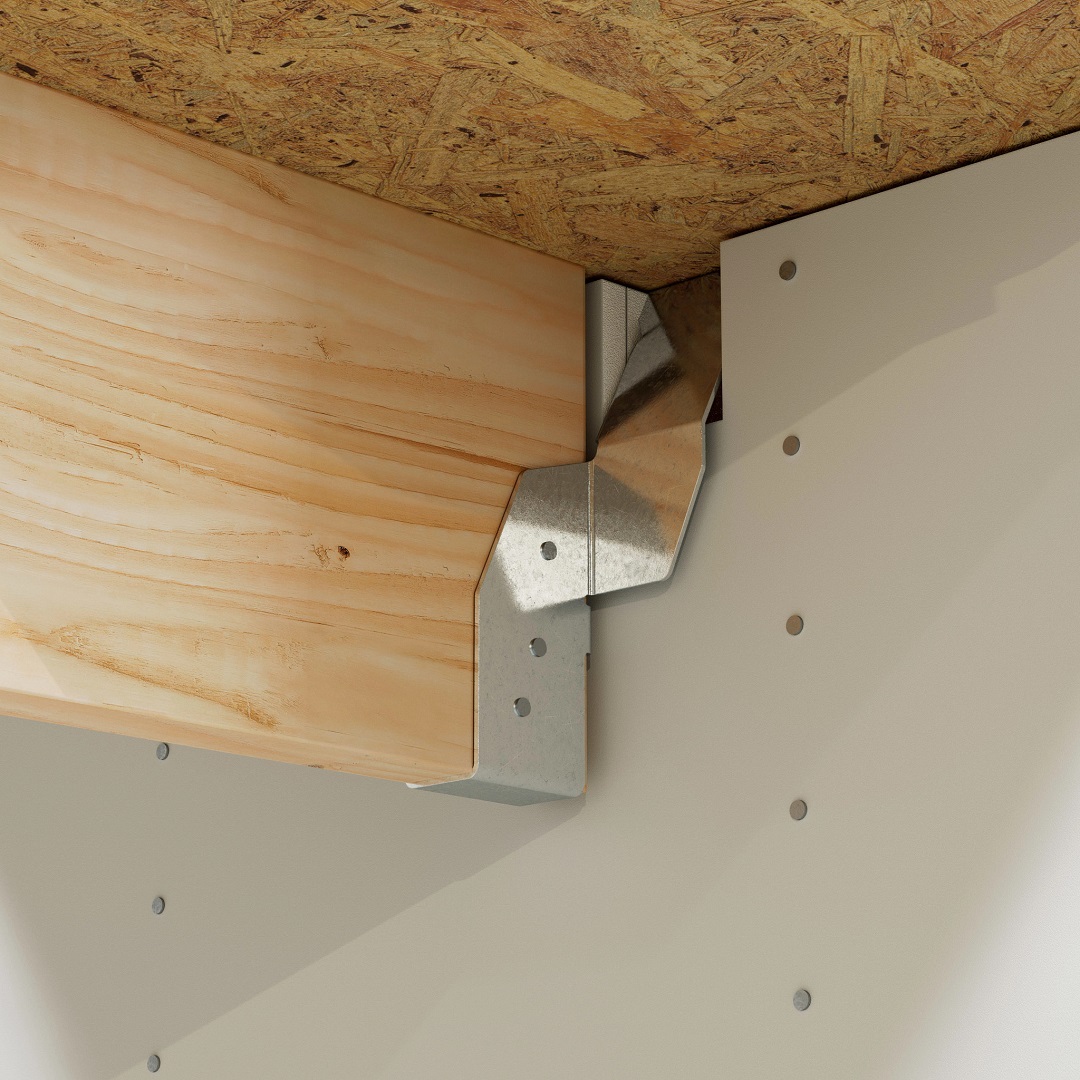
These new fire wall hangers were tested in accordance with ICC-ES AC13 and ASTM D7147, which I discussed in How We Test – Part I: Wood Connectors. These standards do not explicitly detail how to test a hanger installed on a wood stud wall, so we collaborated closely with ICC Evaluation Services to develop a test setup that meets the intent of the standards.
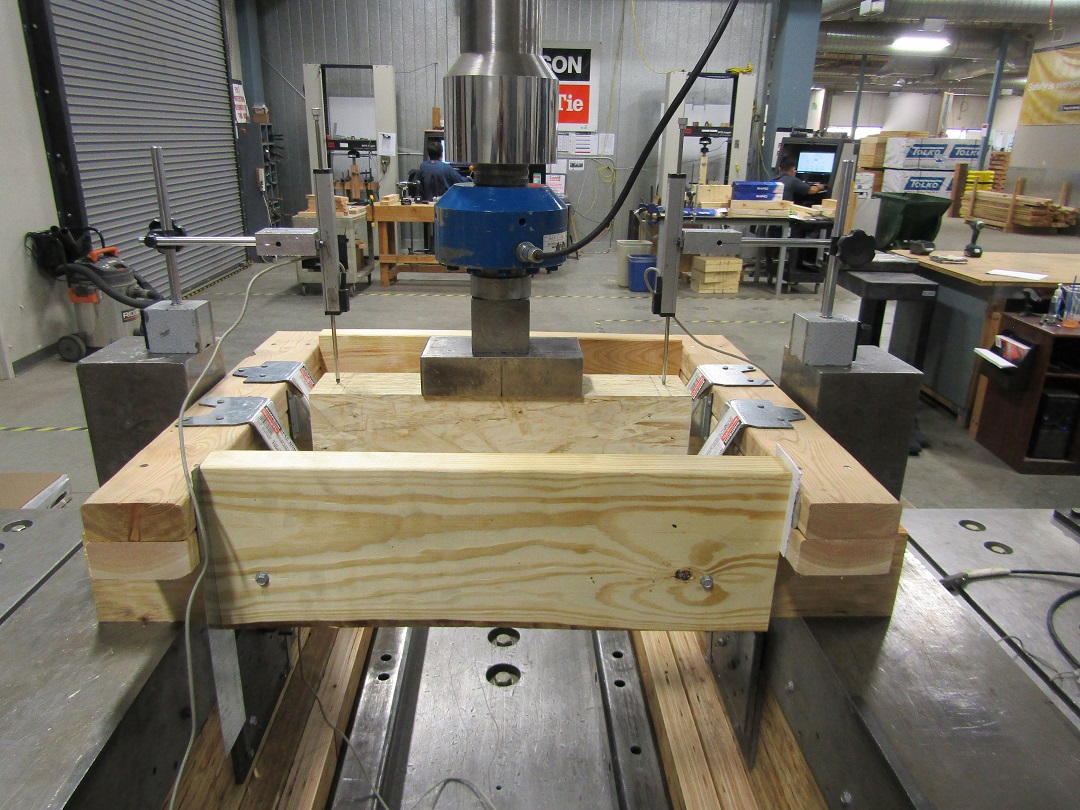
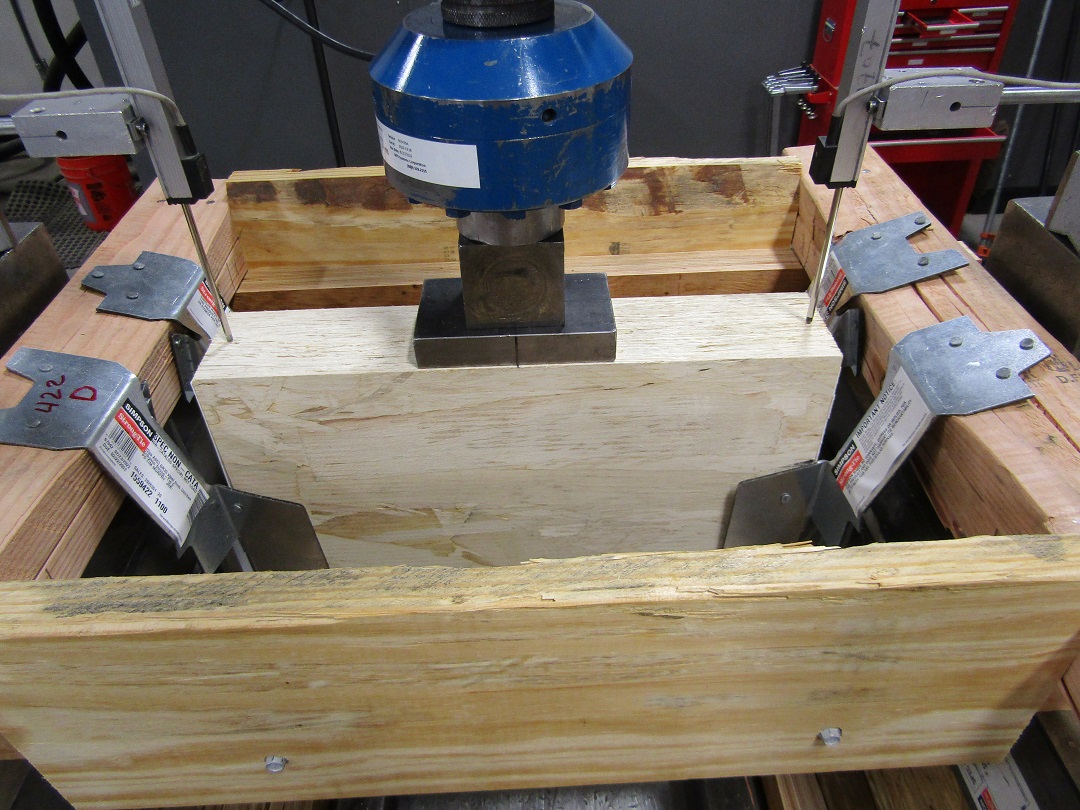
The DGT hangers have been tested according to ASTM E814 and received F (flame) and T (temperature) ratings for use on one or both sides of the fire wall. These ratings verify that the DGT hangers do not reduce the two-hour fire wall assembly rating.
Our testing and load tables address installation of 2×4 or 2×6 stud walls constructed of Douglas fir (DF), southern pine (SP), spruce-pine-fir (SPF) or hem-fir (HF) lumber.

If you are designing a Type III wood-frame construction project, check out our Fire Wall Solutions page, which has product profiles with links to further information about the new DGT hanger series, as well as our DU/DHU series of drywall hangers and fire wall fastener solutions using Strong-Drive® SDWS Timber screws.

